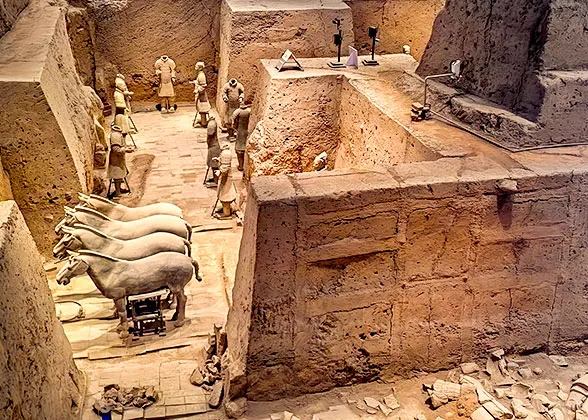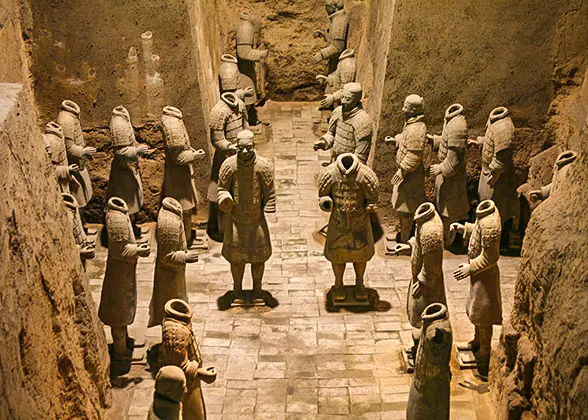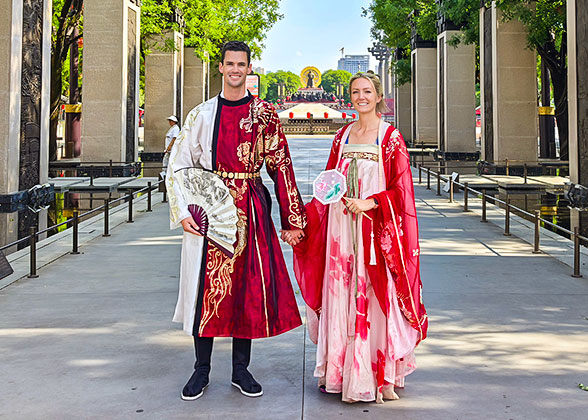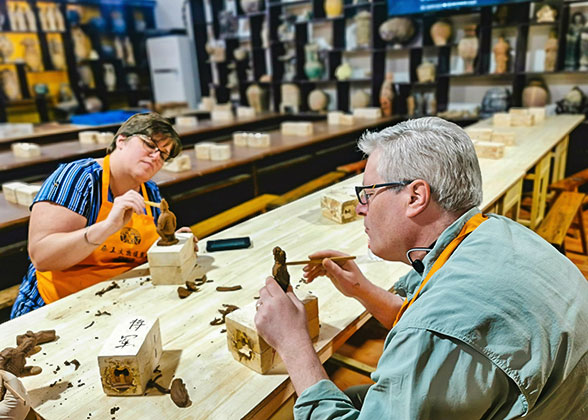Terracotta Warriors Pit 3
Discovered in May 1976 and opened to the public in September 1989, Pit 3 has been fully excavated by archaeologists. Today, visitors can view the complete ancient command center exactly.
What to See inside the Terracotta Warriors Pit 3
Built in the shape of the Chinese character “凹”, the Terracotta Army Pit 3 measures approximately 28.8 meters (94.5 feet) from east to west and 24.6 meters (80.7 feet) from north to south, with a depth of 5.2 - 5.4 meters 17.1 - 17.7 feet) below ground level. The pit consists of three sections: the southern wing-room, the northern wing-room, and the chariot and horse chamber. A total of 68 terracotta warriors were unearthed in this pit, with 42 from the southern wing-room and 22 from the northern wing-room. Unfortunately, many of them are missing their heads. Archaeologists also discovered well-preserved bronze weapons, as well as ornaments made of gold, stone, and bronze. Additionally, remains of lintels and bronze rings found in the boundaries between sections suggest that curtains might have been hung originally for spatial division.
 |
| Xi'an Terracotta Army Pit 3 |
1. Northern Wing-room
2. Southern Wing-room
3. Chariot and Horse Chamber
|
|
Why are there partition walls in the pit of Terracotta Army?
Terracotta Warriors Pit 3 - Command Center of Terracotta Army
Experts suggest that Pit 3 was the headquarters of the entire Terracotta Army. One key piece of evidence is its strategic location - positioned behind Pits 1 and 2 in a secure and hidden spot. Additionally, the terracotta warriors are arranged face to face along the two sides of passageways leading to the main hall, as if guarding the officers inside the southern and northern wing-rooms. Another clue lies in the items these soldiers held - Shu. Measuring about 14 centimeters (5.5 inches) long, the Shu lacks a sharp blade, leading archaeologists to speculate that it was a ceremonial object rather than a practical weapon. Last but not least, unlike the plain chariots in Pits 1 and 2, this one is decorated with colored patterns and carries four soldiers, one more than the others, suggesting it was reserved for high-ranking commanders.
The Commander-In-Chief is Missing
One puzzling mystery for experts is the absence of a terracotta warrior commander-in-chief in Pit 3. Some experts suggest that the Qin Dynasty’s (221 - 207 BC) highly centralized military system placed full authority in the hands of Emperor Qin Shi Huang, the first emperor of China. While there were many renowned generals in the Qin dynasty, during normal times, no permanent commander was appointed. The emperor would only appoint a general temporarily to lead the troops when war was imminent. Since the terracotta warriors in Pits 1 and 2 are stationed in a non-combat state, the command officer in Pit 3 may have been left vacant, awaiting an appointed leader. Others propose that Emperor Qin Shi Huang himself was the supreme commander. To uphold the emperor's dignity and absolute authority, his image would not be depicted among the terracotta warriors.
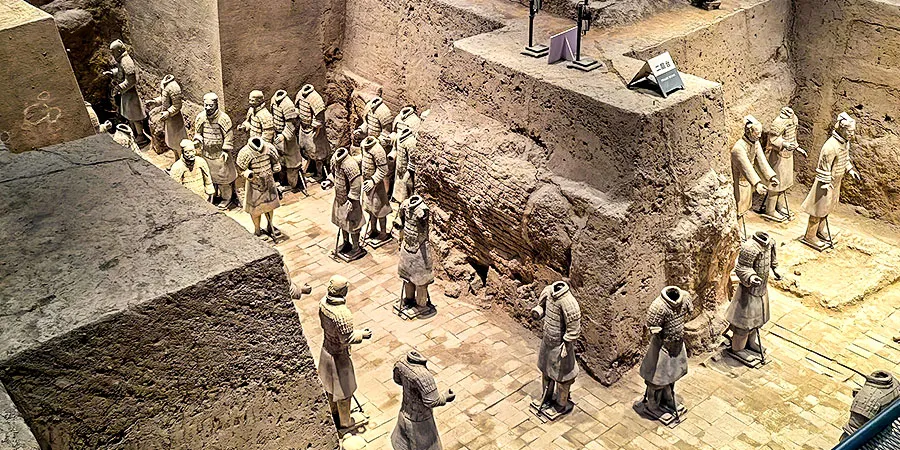 |
| Terracotta Warriors in Pit 3 |
Why Are Many Qin Terracotta Warriors in Pit 3 Headless?
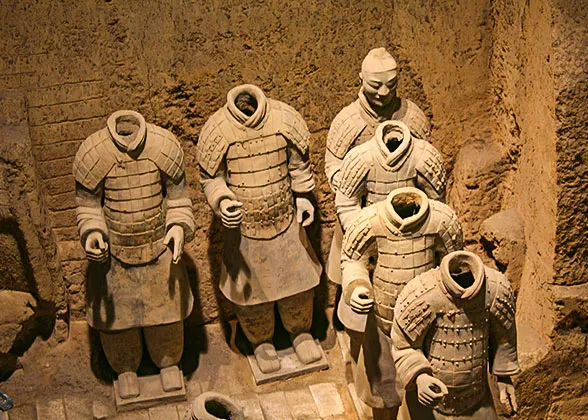 |
| Terracotta Warriors without Heads in Pit 3 |
Research confirms that the terracotta warriors were originally crafted with heads. Excavations revealed numerous small head fragments in this pit, leading archaeologists to speculate that at some point, vandals broke into this pit and deliberately destroyed the warriors. Another compelling piece of evidence came from local villagers, who unearthed half of a terracotta head near the museum’s southern wall. After careful analysis, archaeologists matched it perfectly to a headless warrior's body discovered in Pit 3. This discovery not only verifies that the warriors were complete but also explains their current state, likely damaged by ancient tomb raiders or vandals.![]() Read more:
Read more:
![]() Next: Pit 4 of Terracotta Army Museum
Next: Pit 4 of Terracotta Army Museum
